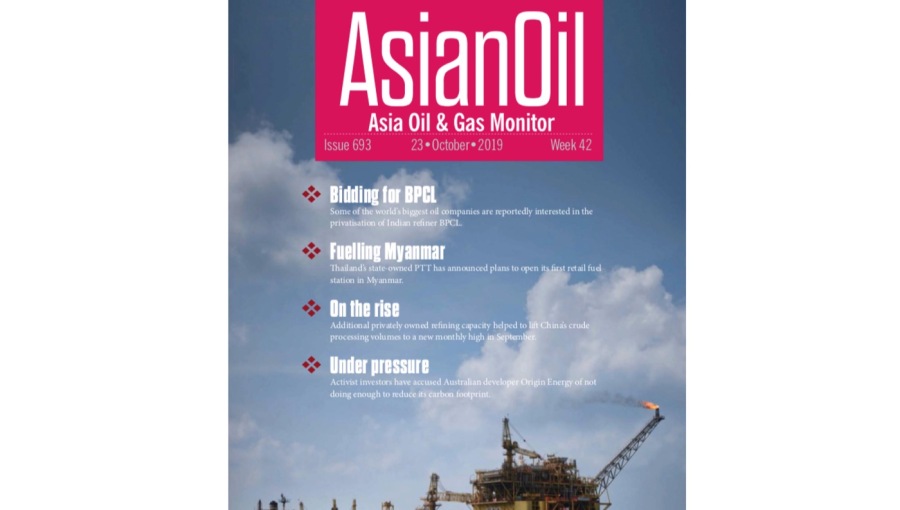AsianOil: Latest Chinese offshore platform capable of tapping heavy-oil reserves

China has seen delivery of the world’s first fully functional mobile thermal-injection platform in Shandong province, south of the capital Beijing.
The operation now paves the way for expanded heavy-oil recovery in the country according to the China National Offshore Oil Corporation (CNOOC).
In a move reported by the Xinhua news agency and termed “Recai No 1” or “Thermal Recovery No 1,” the platform was developed and constructed in and by Chinese firms.
It is currently deployed in waters off Weihai, Shandong, CNOOC said.
The two-deck platform measures 82 metres in length and 42 metres in width. It covers a deck area of more than 3,000 square metres, weighing in at more than 10,000 tonnes. It also stands as tall as a fully constructed 20-storey building.
Supported by four legs each over 70 metres long, the platform is capable of being operated in water depths of up to 35 metres according to reports from China. The platform can also withstand significant typhoons, CNOOC says; an increasingly common occurrence in China’s coastal waters in recent years.
“The platform features several pioneering technologies,” CNOOC stated via Xinhua in a bid to highlight the mobile thermal-injection system and high-temperature, high-pressure steam pipeline compensation technology being employed.
China's offshore oil industry has developed significantly over recent years, becoming a key component of the country's broader energy strategy. Offshore oil is seen as a critical way to reduce China’s reliance on foreign energy imports, particularly given its large and growing demand for oil.
One key point regarding the state of China's offshore oil mining includes the extensive exploration and development of resources in the Bohai Sea, East China Sea, and South China Seas; some areas of which are contested.
Investment in the sector is considerable and takes the form of funds pumped into offshore drilling technology and infrastructure, with a focus on deep-water drilling, which is both technically challenging and resource-intensive. In this regard, CNOOC is understood to have accelerated exploration and development efforts, particularly in the deeper waters of the South China Sea.
This does, however, bring with it territorial disputes with the area which is believed to be rich in oil and gas resources also claimed by several neighbouring countries, including Vietnam, the Philippines and Malaysia. Beijing routinely ignores counter claims though and this has caused an impact on regional relations.
As such, and as high-tech as the latest facility is, it is already raising eyebrows around the region. Equipped with three steam boiler systems, the platform can reportedly inject high-pressure steam at temperatures exceeding 350 degrees Celsius into six oil wells at the same time. This process helps to reduce the viscosity of any heavy oil present, making it more fluid-like in form, and extractable.
The platform, large and heavy though it is, is designed for mobility and is capable of being towed by tug boats to various oil-recovery sites to conduct rapid thermal injection. This approach significantly lowers heavy-oil development costs, enabling large-scale thermal recovery operations.
Heavy oil, which is more viscous than conventional crude, is routinely challenging to extract. To this end, unlike conventional methods, which rely on cold-recovery techniques, heavy-oil extraction typically requires a degree of thermal recovery. And with heavy oil accounting for over two-thirds of the world’s proven crude oil reserves, and China one of the world’s four largest producers of heavy oil with an estimated heavy-oil resource volume of around 19.87bn tonnes, it is a form of technology both being highly publicised, but jealously guarded.
If you’d like to read more about the key events shaping Asia’s oil and gas sector then please click here for NewsBase’s AsianOil Monitor.


Follow us online